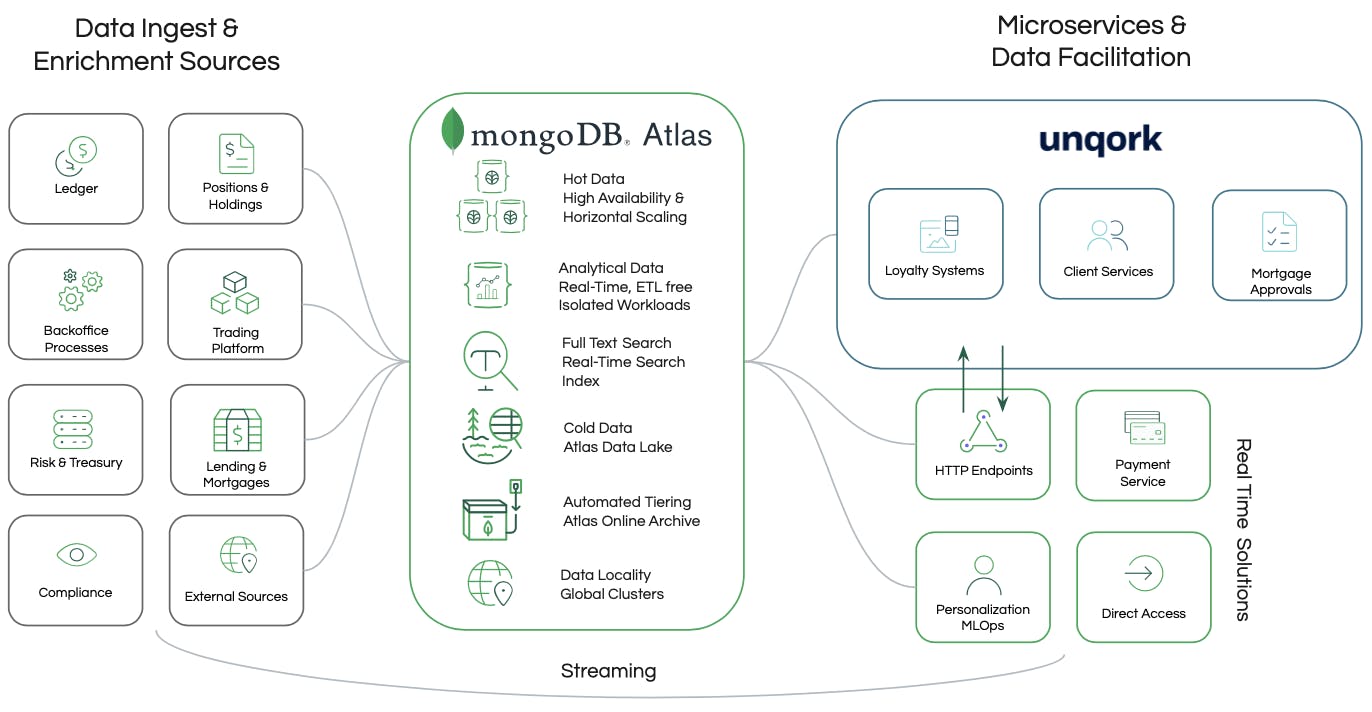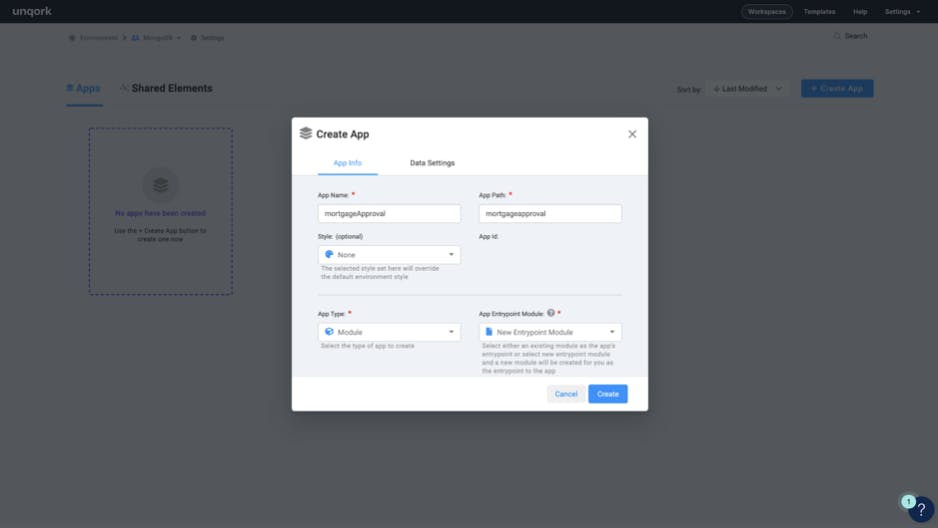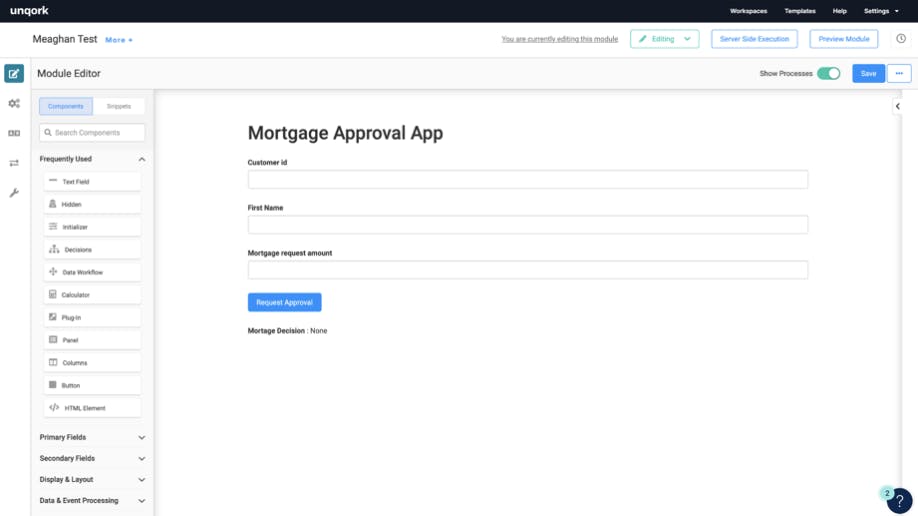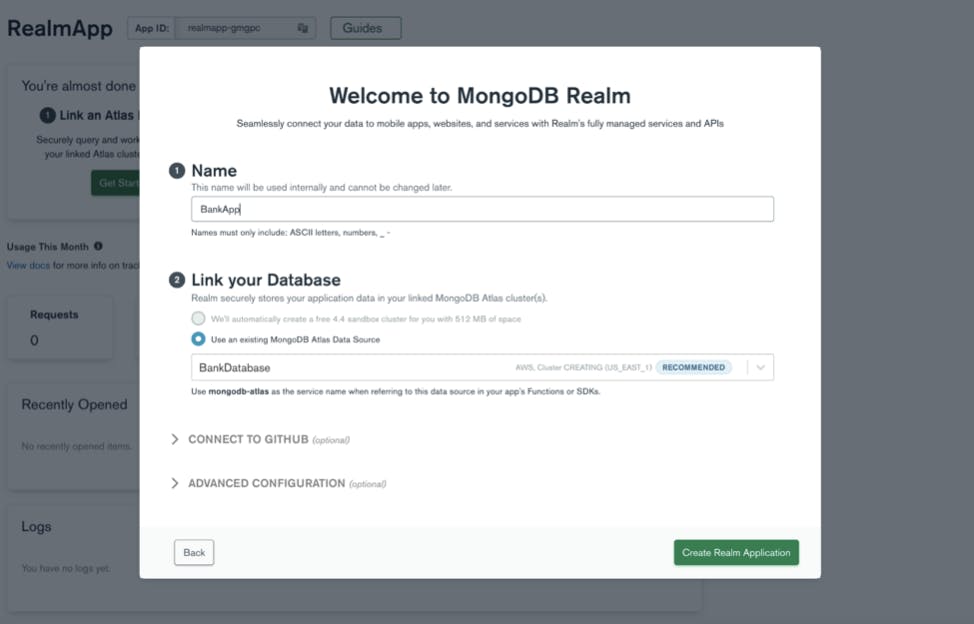Get Started in No-Code App Development with Unqork and MongoDB
Classic application development can be a long haul process. Even using Agile methodologies, teams of developers still work to build, test, and launch applications in a series of sprints, using many of the same programming languages and approaches as they have for years.
That was until the concept of low and no-code app development arrived. Aiming to cut development cycles and empower non-developers, no-code in particular is gaining traction as a go-to-market strategy for modern apps. No-code is an alternative to traditional application and software development processes, allowing apps to be built through a simplified, interactive UI, rather than writing code from scratch.
While the concept of no-code tools has been around for a while - from Visual Basic to WYSIWYG web editors like Wix and “super spreadsheets” like Airtable - newer no-code-based application development platforms take the concept a step further, dramatically simplifying the application development process itself.
In the booming world of no-code, one company stands above the rest, Unqork. Unqork invented the first completely visual, no-code application platform to help enterprises build custom software faster, with higher quality and lower costs than traditional approaches––all without a single line of code.
And with Unqork freeing organizations from the traditional constraints of developing with code, it was only natural that the pioneer of no-code application development partnered with MongoDB to also free them from the constraints of database design and management.
Syncing Unqork with MongoDB Atlas
Building out a new no-code application with Unqork is efficient and simple. From the database side of things, MongoDB has everything that a business needs with functionality to store, manage, and analyze data. MongoDB and Unqork are each functional and powerful in their own capacity, but when used together, an organization can truly improve and innovate their application development experience.

Use Case Example: Mortgage Approval Application
Large financial institutions have many separate functions and applications in use. A typical large bank will employ many different applications and microservices, all of which rely on many different data sources. This can quickly lead to complexity for their software infrastructure. The bank must make intelligent choices for their app development to stay lean and agile and not add unnecessary complexity.
In this example, a bank decides to build out a new mortgage approval application as part of their loan origination infrastructure; an otherwise complex process that requires a variety of data, from bank information to customer background information, and data enrichment. The bank wants to build a portal where customers can log on, request a certain amount of money, and the application can decide whether or not they want to approve the mortgage quickly. In theory, the application objective is simple, however it needs to pull on the greater customer database for data collection and analysis.
Let's break down the simple steps of this integration process.
Step 1: Create an Unqork application
Since Unqork is a no-code application, it’s simple to drag and drop objects into the format wanted. For this example, text fields were used for users to input their data into the application. This app is a mortgage approval application, so we wanted to look at the customer’s information as well as how much money they are looking to borrow.

The creation of the application is a single screen that allows users to define the overall concept and functions of the mortgage approval application, and manage the influx and outflow of data.

In Figure 3 we see elements and functions simply on the left side of the screen, representing the available functions, that can be dragged into the user screen and put into context with their execution.
Step 2: Configuring MongoDB Atlas and Realm
While MongoDB is the underlying data platform for Unqork, it is unlikely that all customer data in a large, multi-department organization like a bank would always reside in Unqork. Therefore the bank's “Client 360 data layer” - held in a separate MongoDB Atlas instance - needs to be connected to Unqork.
Given this, the next step is to get your MongoDB cluster ready to connect to the new Unqork-built mortgage approval application. MongoDB Atlas enables this connection via MongoDB Realm’s HTTP Endpoints (previously named Webhooks).
MongoDB Realm is a set of application development services that makes it simple to build best-in-class apps across mobile and the web, like HTTP endpoints. Other services include edge-to-cloud data sync, instant GraphQL API, triggers, and functions.
To work with MongoDB Realm’s HTTP endpoints, you must first create a Realm app – the central backend instance for your mobile or web application. You can easily create an app using MongoDB’s web GUI, as shown in the figure below.

Step 3: Connect MongoDB Atlas to Unqork application
Finally, in order to realize the benefits of both MongoDB Atlas and Unqork, we need to connect them to each other. As previously stated, this is achieved through MongoDB Realm’s HTTP endpoints. Both MongoDB Realm and Unqork have easy to use interfaces when it comes to sending requests over HTTPS with services like endpoints, and all we need to do is write the logic for the endpoint itself. By using MongoDB Realm functions we are able to access MongoDB Atlas data easily and connect to third party applications simply and with minimal code.

To connect the Unqork application to MongoDB Atlas, we’ll first need to set up our endpoints in MongoDB Realm. This provides us with an endpoint URL that we can use from Unqork. We can also define our HTTP endpoint serverless function here to send and receive data with Unqork.
This is done from within Unqork. We navigate to “Administrator Access” and create a connection. Using the HTTP URL from Realm, we can create a connection within Unqork. Going back to our Unqork application, we can then create a plugin and use the integration that we created before. We have to fill in the correct information pertaining to the webhook, but once done, we’ll have our connection.
To learn more about migrating to MongoDB Atlas and what that means for accelerated development, connect with the MongoDB team here. To request a demo of Unqork or learn more about development acceleration with their No-code approach, connect here.
MongoDB & Unqork: No-Code Together
While MongoDB and Unqork individually are powerful platforms, when deployed in tandem they provide a powerful solution to accelerate development.
MongoDB Atlas gives us the ability to run our database on multiple clouds through the same service,” said Unqork Founder and CEO, Gary Hoberman. “With Atlas, we have the freedom from cloud vendor lock-in—each client can choose where they are the most comfortable hosting their data.”
Together, development is automated and optimized, allowing for more time on innovation and less time on maintenance and upkeep. For businesses, the no-code movement has many benefits, including freeing them to focus on differentiating projects, like developing apps that customers actually want, rather than maintaining lines of code and waiting for teams of developers to build the traditional way.
The value together brings:
- Accelerated time-to-market: With Unqork, enterprise applications can be developed three times faster. Teams are empowered to deploy quickly without the traditional code-based approach. Meanwhile, MongoDB, by design, is developer and DevOps friendly with its flexible use and automation. Together, time-to-market is decreased as resources can be spread more evenly across teams.
- Reduced TCO: With Unqork, the development process requires fewer resources providing three times cost savings versus Total Cost of Ownership (TCO) with a code/low-code-based approach. Meanwhile, MongoDB’s cost of managing and running a database is already taken care of and remains highly available even throughout system updates.
- Engaged employees: Unqork provides a collaborative platform that frees technology from high-volume development and management tasks so a team can do the best work of their careers. MongoDB allows developers to work in their desired programming language, with idiomatic drivers, flexible data models and intuitive building.
- Unlocked innovation: Because projects can get ramped up quickly with lower costs by using Unqork, the cost of innovation and experimentation is greatly mitigated. Similarly in MongoDB, creating and developing a database can be done at speeds that drastically beat traditional relational databases.
Both Unqork and MongoDB work with large organizations across some of the world’s most regulated and complex sectors, making security yet another key reason the two became partners.
“One of the big things that drew us to MongoDB Atlas over the other DBaaS providers was the security features,” Hoberman added. "When we partner up with a client, we take over and support their most critical processes and data assets."
Unqork keeps all data encrypted in-transit and at-rest throughout the entire platform and Atlas allows each Unqork customer to have their own MongoDB instance with their own development and production environments.